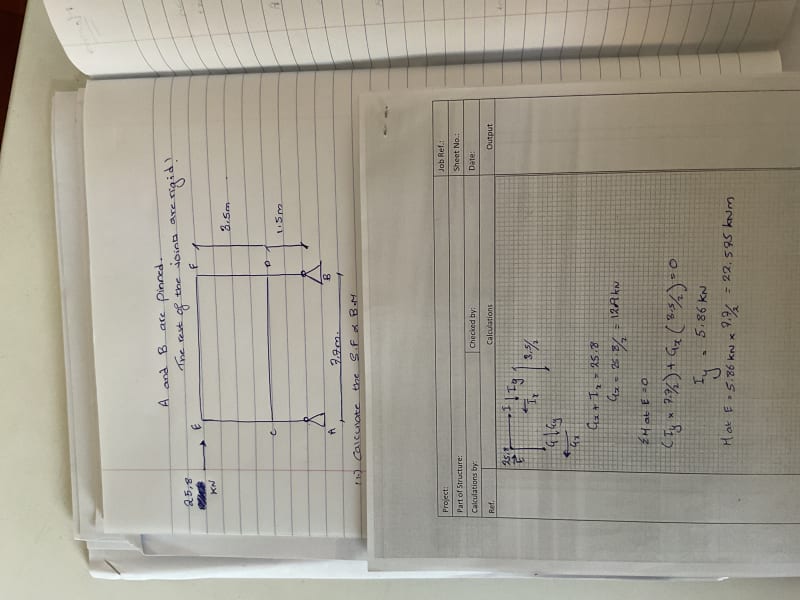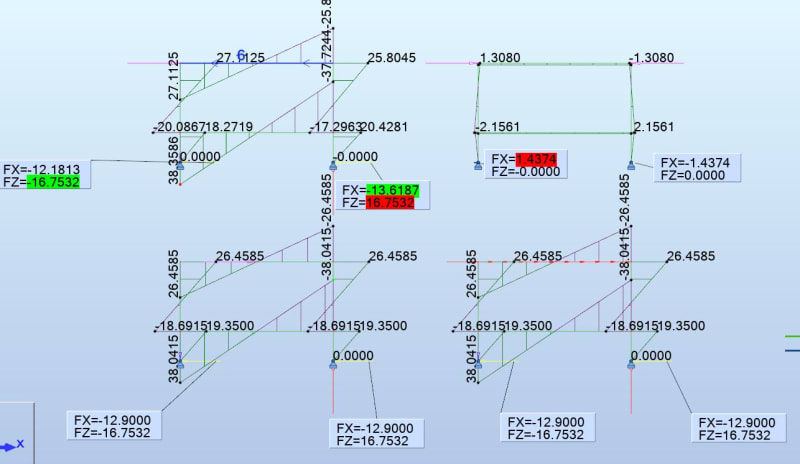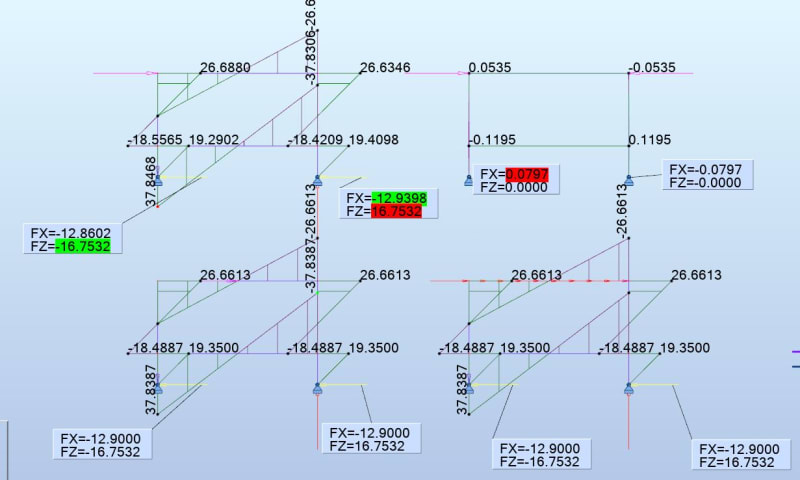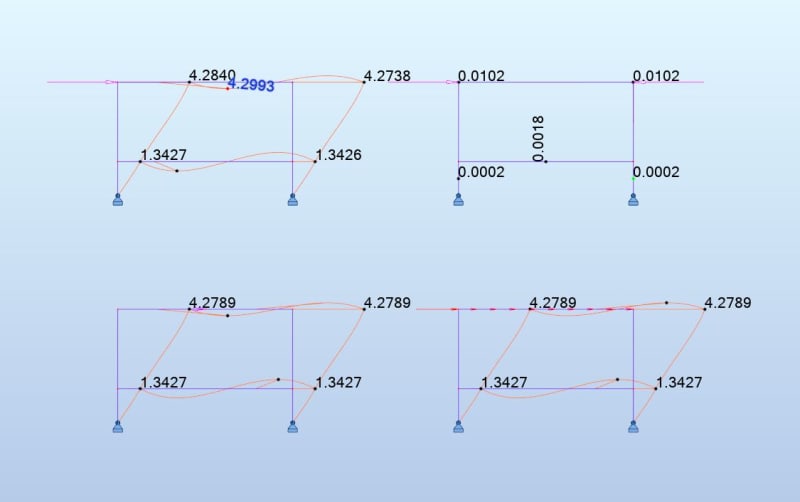Bogusbogedi
Structural
- May 31, 2024
- 16
Stuck on a Frame analysis.
I keep getting a moment of 22.6 KNM whereas using the prokon frame analysis module I keep getting around 32.
I analysed the frame without the sway correction as of yet, but I genuinely do not feel it would amount to such.
I have tried introducing points of contraflexire between the rigid joints but can’t seem to match the software analysis.
Kindly let me know what I am possibly doing wrong.

I keep getting a moment of 22.6 KNM whereas using the prokon frame analysis module I keep getting around 32.
I analysed the frame without the sway correction as of yet, but I genuinely do not feel it would amount to such.
I have tried introducing points of contraflexire between the rigid joints but can’t seem to match the software analysis.
Kindly let me know what I am possibly doing wrong.





